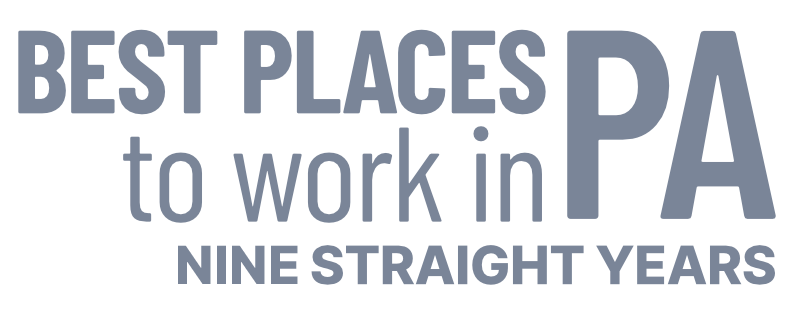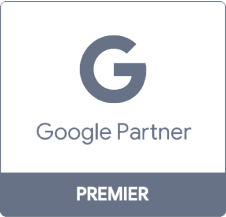7 Game-Changing Email Segmentation Strategies to Use
Segmenting your emails can increase your revenue by up to 760 percent — making it a marketing tactic worth your time. When you target your emails to specific readers, you can radically transform the effectiveness of your email marketing antics.
What are the best email segmentation strategies to use, though?
Keep reading to get some email segmentation ideas for your email campaign. If you’re looking for immediate assistance with your email marketing strategy, give us a ring at 888-601-5359 to chat with our award-winning strategists or contact us online!
1. Prior purchases
When you send out mass emails about products to all your subscribers, you may miss the mark when it comes to earning more sales. The key to successfully marketing your business via email is adding a sense of personalization.
How can you personalize your emails, beyond adding a reader’s first name?
Check a shopper’s past purchases. The services or products a customer has bought from you in the past can serve as a strong indication of the type of goods they like, which can help your team provide personalized product recommendations.
When a user purchases from your business, send them an email that provides a list of similar items they may like to buy. If you sell items that consumers purchase on a routine basis like daily-use products, send them a reminder email encouraging them to refill their order too.
2. Day and time
Did you know that one of the best ways to increase the effectiveness of your email marketing strategy focuses on segmenting your emails by the time of day and the day of the week? It’s true, and it’s an effective tactic more companies are using.
If your business sells caffeine, for example, you may send your emails first thing in the morning when readers are checking their email and enjoying their first cup of coffee for the day. In comparison, an audience of college students may receive their emails in the afternoon.
There isn’t a universal time for when you should send marketing emails.
In most cases, the effectiveness of this strategy depends on who your target market is and what it is you’re selling. Examine your audience to establish a timeframe for when they’re most likely to check their inbox.
When it comes to the day of the week, you may want to send important emails during the week rather than near the end of it. While users actively check their email throughout the week, many unplug over the weekend.
Maximize the results from your email marketing campaign by testing different send times and days. Based on your results, you can establish when you want to send out specific emails to increase your click-through-rate (CTR) and sales.
3. Geographically
Whether you run a business that operates a physical facility and online store, or you lead a company with stores scattered throughout the nation, you can benefit from segmenting your emails geographically.
With geographic targeting, you can focus on sending specific emails to subscribers based on their location. If you oversee a restaurant that operates in both Houston and Philadelphia, for example, it won’t benefit your audience in Texas to read about your new menu options in Philly.
If you run an ecommerce business that also provides services or products in-store, it’s more beneficial to send out promotional emails about your brick-and-mortar store to shoppers that live nearby versus halfway across the country.
How can you implement this email segmentation strategy?
When users purchase from your store, you can give them the option to join your email newsletter. If they’re buying online, their opt-in — depending on your terms and conditions — can reference their location via their billing or shipping address.
You can also ask users to submit their zip code when subscribing to your email.
In the sign-up form, your team can emphasize that a user’s zip code allows your company to provide personalized recommendations and updates from your nearest store. For many users, the chance at personalized suggestions is worth sharing their location.
Plus, it prevents readers from having unnecessary emails about a distant location flooding their inbox. It also reduces the number of “spam” messages they receive from your business, while increasing the value they feel from subscribing to your emails.
4. Demographics
Whether you operate in a niche industry or sell a universal product commonly used by consumers scattered throughout the globe, you’ll likely find that your customers consist of various demographics.
Varying demographics come with different shopping habits, however.
A woman in her 60s may not want to purchase the same products as a male in his 20s. That doesn’t mean that they’re not interested in your company, though. If you have a large product or service line, it’s likely they use your business, but for different purposes.
That’s why you want to develop your content for specific audience demographics.
What aspects of a customer should you pay attention to when segmenting your emails?
Vital demographics include:
- Age
- Income level
- Sex
- Educational level
- Occupation
Why are demographics such a valuable email segmentation strategy? When you segment your emails by demographic, you can increase your sales and make your email marketing goals easier to achieve.
5. Shopping cart abandonment
If you operate online, you know how critical it is to maximize your leads and achieve more revenue. When users take an interest in your products, you feel like you’re one step closer to reaching these goals.
Just because a user added one of your items to their shopping cart doesn’t mean that they’ll fulfill their purchase, though. Studies show that an astonishing 68 percent of shopping carts end up abandoned and never result in a sale.
That’s why, when you’re developing a segmented email campaign, it’s crucial to focus on reigniting interest in these abandoned shopping carts to maximize the success of your ecommerce business.
How do you persuade shoppers to return to your website and finalize their purchase?
For many businesses, shopping cart abandonment emails work well. While you can’t convince every would-be customer to buy your products, it doesn’t hurt to encourage their interest with an email.
Sometimes, people stray from their virtual shopping cart due to a distraction or because they don’t have their payment information on-hand. When you send a friendly reminder that their products are still waiting for them in your online store, you can successfully recover your sales.
6. Opt-in (and opt-out) messages
Even though asking your users whether they still want to receive your emails may seem counterintuitive to your growth, cleaning your subscriber list can help increase the effectiveness of your email marketing campaign.
Sometimes, people replace their old emails with a new one. Or gradually, over time, they lose interest in your brand. No matter why a user no longer reads your messages, it’s vital to ensure that your mailing list includes people who still read your emails.
How do you clean your email list?
One of the many ways to guarantee that your subscribers are an asset — and not a liability — to your business focuses on sending out opt-in messages. Do more than give your subscribers a chance to opt-in or opt-out.
Provide them options that allow them to determine how frequently they want to get your emails or what type of content they want to receive. Rather than unsubscribing from your messages entirely, they’ll have the choice to stay a part of your email list while remaining satisfied too.
7. Birthday
Who doesn’t like to feel special on their birthday?
Email segmentation can help your company prioritize readers and expresses that they’re a valuable part of your business. What better way to achieve this than by sending out birthday wishes — and promos — to your subscribers on their special day?
Your emails for birthdays could include the following:
- Unique gifts available with their purchase
- Promotions or discount codes
- Access to birthday-only deals or products
If you send birthday promotions to shoppers, consider sending the email a few days before. You can even make the birthday offer good for an extended period, like a week, to provide a shopper with more time to act on your offer.
Want to accelerate your email marketing campaign?
There are dozens of ways to segment your emails, so don’t feel like you must settle for just one. When you find the best way to divvy up your messages, you can start to enjoy higher open and purchase rates.
If you’re overwhelmed with marketing your company via email, WebFX can help.
With more than 500 experienced digital marketers, plus more than 28 years of experience, we are a trusted choice for small-to-midsized businesses. So far, we’ve generated more than $6 billion in revenue for our clients, hence our client retention rate of 91%.
Are you ready to get started?
Give us a ring at 888-601-5359 or contact us online to transform your email marketing!
Marketing Tips for Niche Industries
- 5 Benefits of Email Marketing for Franchises
- 5 Benefits of Email Marketing for Restaurants
- 6 Stellar Benefits of Email Marketing for Solar Companies
- 7 Email Marketing Ideas for Nonprofits
- 7 Keys to Successful Veterinarian Email Marketing
- 7 Steps to Email Marketing for Luxury Brands
- Email Marketing for Chiropractors
- Email Marketing for Churches: 9 Tips for Better Emails
- Email Marketing for Doctors & Medical Practices
- How Can Email Marketing Help Your Dental Practice?







